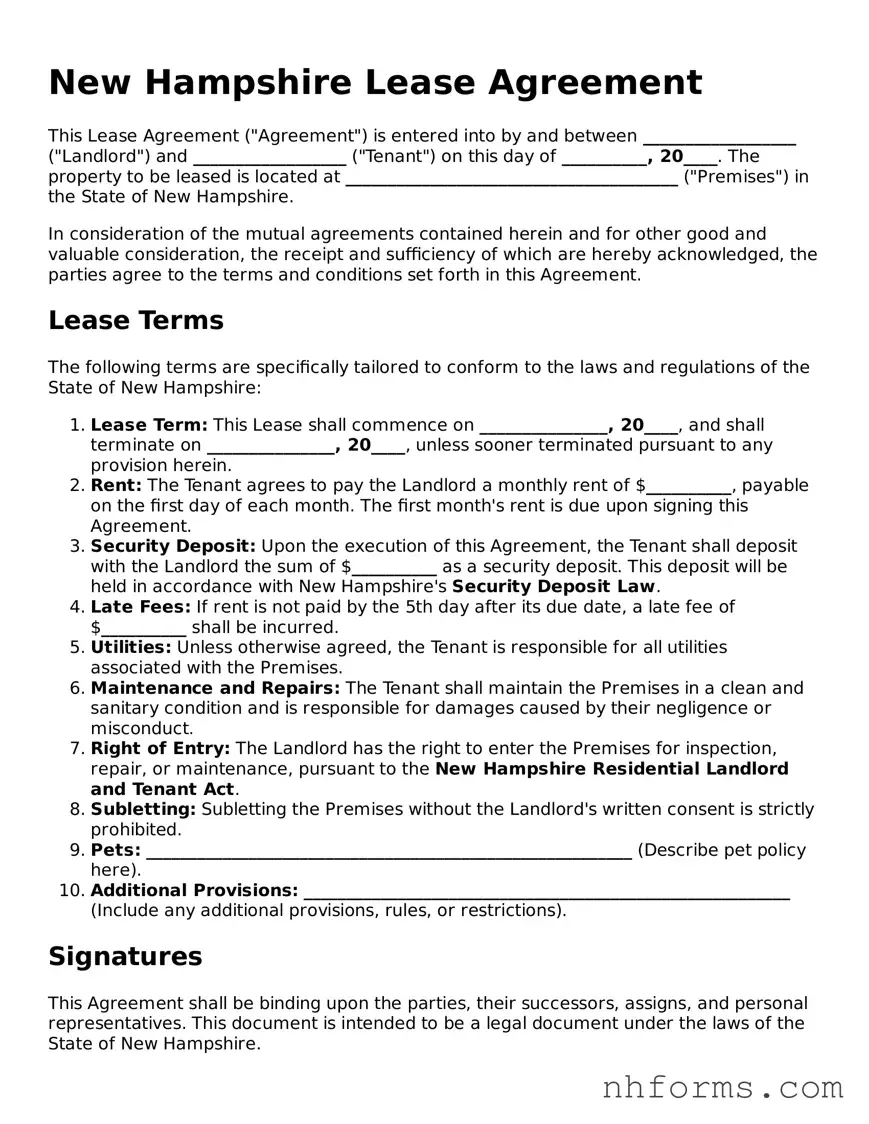New Hampshire Lease Agreement
This Lease Agreement ("Agreement") is entered into by and between __________________ ("Landlord") and __________________ ("Tenant") on this day of __________, 20____. The property to be leased is located at _______________________________________ ("Premises") in the State of New Hampshire.
In consideration of the mutual agreements contained herein and for other good and valuable consideration, the receipt and sufficiency of which are hereby acknowledged, the parties agree to the terms and conditions set forth in this Agreement.
Lease Terms
The following terms are specifically tailored to conform to the laws and regulations of the State of New Hampshire:
- Lease Term: This Lease shall commence on _______________, 20____, and shall terminate on _______________, 20____, unless sooner terminated pursuant to any provision herein.
- Rent: The Tenant agrees to pay the Landlord a monthly rent of $__________, payable on the first day of each month. The first month's rent is due upon signing this Agreement.
- Security Deposit: Upon the execution of this Agreement, the Tenant shall deposit with the Landlord the sum of $__________ as a security deposit. This deposit will be held in accordance with New Hampshire's Security Deposit Law.
- Late Fees: If rent is not paid by the 5th day after its due date, a late fee of $__________ shall be incurred.
- Utilities: Unless otherwise agreed, the Tenant is responsible for all utilities associated with the Premises.
- Maintenance and Repairs: The Tenant shall maintain the Premises in a clean and sanitary condition and is responsible for damages caused by their negligence or misconduct.
- Right of Entry: The Landlord has the right to enter the Premises for inspection, repair, or maintenance, pursuant to the New Hampshire Residential Landlord and Tenant Act.
- Subletting: Subletting the Premises without the Landlord's written consent is strictly prohibited.
- Pets: _________________________________________________________ (Describe pet policy here).
- Additional Provisions: _________________________________________________________ (Include any additional provisions, rules, or restrictions).
Signatures
This Agreement shall be binding upon the parties, their successors, assigns, and personal representatives. This document is intended to be a legal document under the laws of the State of New Hampshire.
IN WITNESS WHEREOF, the parties have executed this Agreement on the day and year first above written.
Landlord's Signature: _______________________ Date: __________
Tenant's Signature: _______________________ Date: __________
